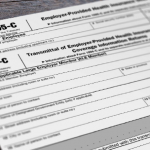Under the Patient Protection and Affordable Care Act, the employer-provided coverage must be “Affordable,” so that Applicable Large Employers avoid penalties under the “Pay or Play” rules.
Affordability will be determined by whether the coverage offered costs an employer more than 9.5% of their annual household income. Since there is no practical way for an employer to know what an employee’s “household income” is, employers can use one of the following safe-harbor methods to ensure plan affordability:
- Form W-2: An employee’s monthly contribution for self-only coverage is affordable if it does not exceed 9.5% of their W-2 wages (box 1) for that calendar year.
- Rate of Pay: An employee’s monthly contribution for self-only coverage is affordable if it is no more than 9.5% of their monthly wages (hourly rate of pay x 130 hours, or for salaried employees, their monthly salary figure).
- Federal Poverty Line (FPL): An employees monthly contribution for self-only coverage is affordable if it does not exceed 9.5% of the PFL for a single individual.
If an employer does not provide a plan that is “affordable” with at least “minimum value” coverage, the employee can shop for insurance through a public exchange and may qualify for federal tax credits and/or subsidy. Employers that qualify under the ACA “Pay or Play” employer mandate, will face penalties if they fail to provide “affordable” with at least “minimum value” coverage and have employees that receive federal tax credits when purchasing exchange-based coverage.
- Starting January 1, 2015, employers with 100 or more full-time equivalent employees must offer “affordable” coverage with at least “minimum value” coverage to 70% of their full-time employees. By 2016, large employers (100+ FTE) will need to provide coverage to at least 95% of their full-time employees under the ACA “Pay or Play” employer mandate.
- Starting January 1, 2016, employers with 50 or more full-time equivalent employees must offer such coverage to at least 95% of their full-time employees under ACA “Pay or Play” employer mandate.
It is important to note that if an Employer offers a plan that is “affordable to the employee with at least “minimum value” coverage, the employee is NOT eligible to receive federal tax credits through Covered California (public exchange). The exception to this rule is for employees whose income is below 138% of poverty in states that have expanded Medicaid (i.e. Medi-Cal in CA), even if their employer offers coverage. Employers are not penalized for employee who receive Medicaid coverage. The employer must meet the “affordability” criteria for the “employee only,” and at this time, there are no requirements for the employer to make spouse and/or dependent children coverage affordable.
Nothing is easy when it comes to the Affordable Care Act, however, our goal is to effectively help you navigate through your plan options and maintain your budget, while remaining compliant.
This post is a service to our clients and friends. It is designed only to give general information on the developments of ACA. It is not intended to be a comprehensive summary of recent developments in the law, treat exhaustively the subjects covered, provide legal advice, or render a legal opinion. MNJ Insurance Solutions are not attorneys and are not responsible for any legal advice. To fully understand how this or any legal or compliance information affects your unique situation, you should discuss with a qualified attorney.




